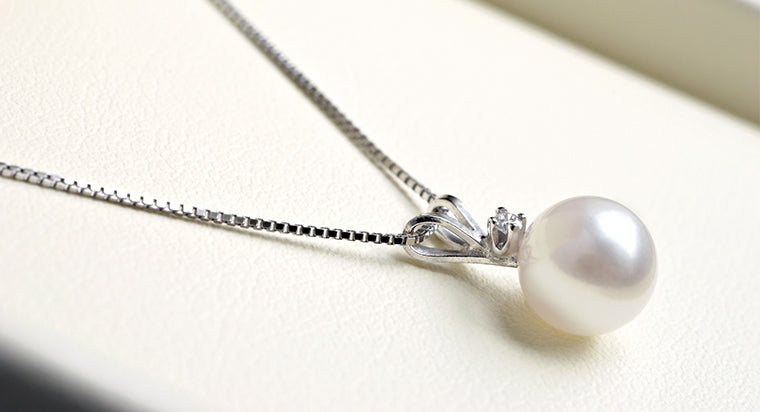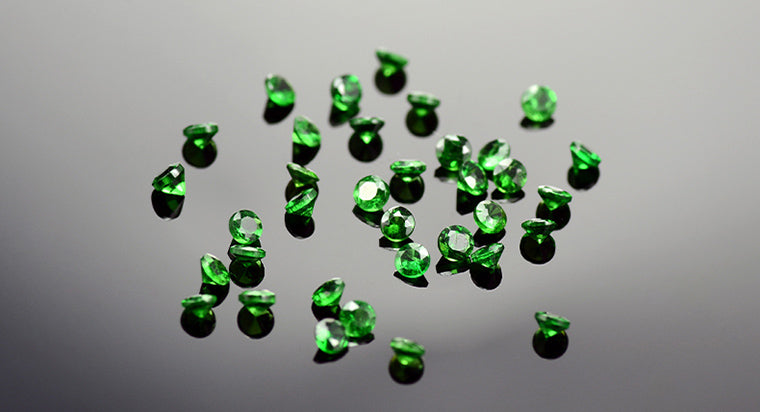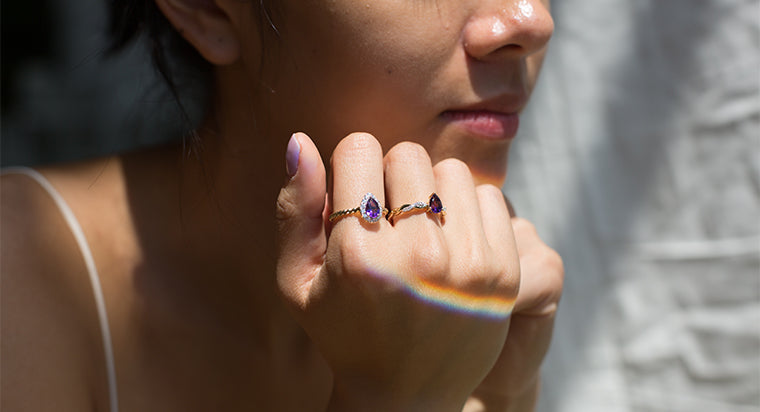How is Aquamarine Valued?

Aquamarine is a member of the Beryl mineral family and is made from Beryllium Aluminium Silicate. Other popular varieties of Beryl include Emerald, Heliodor, and Morganite. Beryl gemstones are often used to fashion earrings, rings, etc, and Aquamarine jewelry has grown in popularity over the years.
TABLE OF CONTENTS
The Origin of Aquamarine
The Romans
Aquamarine takes its name from Latin (translates as water and sea). Roman philosopher Pliny described the gemstone rather fittingly “the lovely aquamarine, which seems to have come from some mermaid’s treasure house, in the depths of a summer sea, has charms not to be denied.” The Romans certainly considered the aquamarine to be a prized gem, but other civilizations also appreciated the stone.
Early Ancient Egypt
Whereas early Sumerians and Egyptians also valued aquamarine - deeming it a symbol of youth and happiness (the stone has been discovered within ancient burial sites), and ancient Greeks utilized the stone to create intricate artwork.
Modern-day Natural aquamarine locations
Nowadays aquamarine is mined in the Karakoram mountains of Pakistan and can also be found in Brazil, Kenya, Nigeria, Madagascar, Zambia, Tanzania, Sri Lanka, Afghanistan, and Russia. The largest aquamarine discovered measured an impressive 19 inches.
Aquamarine Value and Gemstone Properties
Beryl is a silicate mineral and is considered to be quite rare, it can usually be found in metamorphic and igneous rocks. Moreover, it has a chemical make-up of Be3Al2Si6O18 and scores a 7.5 to 8.0 on the Mohs hardness scale. The scale runs from 1 to 10 and is used to measure a mineral’s resistance to scratching, so this gem scores relatively highly.
Gemstones are also measured against a refraction index (how much light is slowed or bent as it passes through), aquamarine has a reflective index of 1.57-1.58.
Aquamarine: Fit for Royalty
Aquamarine is a popular gem, and the stone was brought under the spotlight by the Duchess of Sussex. Recently when the Duchess of Sussex got married, she wore Princess Diana’s spectacular aquamarine and diamond-encrusted cocktail ring during the evening reception.
Princess Diana allegedly commissioned the aquamarine ring after her divorce. The stunning ring features a large blue 30-carat aquamarine stone surrounded by small diamonds, all of which are set in 24-carat yellow gold. Prince Harry gifted it to his wife-to-be for the royal wedding, and we expect she was over the moon – not only is the piece stunning, Meghan Markle’s aquamarine ring value is approximately £70,000 ($87,000).
Aquamarine Gemstone Meaning
The birthstone of March, this precious blue-green gem is often worn by those seeking tranquillity and serenity. The aquamarine birthstone is also linked to compassion and healing and is believed to have soothing properties. This association with peace may also explain why it was believed to calm the seas - seafaring types hoped aquamarine would keep them safe from harm during voyages.
Aquamarine is also linked to enriching a marriage, providing a happy couple with happiness, and a sense of togetherness. Therefore, while diamonds tend to be synonymous with romance, an aquamarine engagement ring could prove to be an attractive, more affordable, and unique alternative.
Aquamarine Gemstone Value
Like many other gemstones, the four C’s – color, clarity, cut and carat, come into play when determining aquamarine stone value.
Aquamarine Color
The color of aquamarine ranges from pale blue to a strong dark blue or green/blue hue. A darker stone with richer colors (an intense dark blue with green tones) tends to show up fewer inclusions (flaws) and is therefore deemed more valuable.
Aquamarine Crystal Value
Aquamarine crystals range in size, some are on the small size, and others can weigh as much as 100 pounds. For an aquamarine to display an intense color it ideally needs to be over 5 carats. As these gemstones are available in large sizes as well as small, the value per carat does not increase for bigger stones.
Aquamarine Clarity
Faceted aquamarines are usually eye-clean (when you look at the stone you won’t see any flaws). Therefore, these gemstones are ideal for fashioning items of jewelry. If the gemstones do have obvious flaws they do not go to waste, instead, they are often used to create beads and carvings.
Aquamarine Cut
Aquamarine gemstones can be cut into a number of shapes, including round and ovals or emerald shapes. Known for their solidity and transparency, these blue-green gems are popular with jewelry designers and artists.
How Much is an Aquamarine Worth?
Prospective buyers can consult an aquamarine value chart to ascertain aquamarine gem value. As a rough guide, a 1-carat aquamarine would cost approximately $675 per carat and a 2-3 carat aquamarine would be around $1,000 to $1,500 per carat. Growing in carats would be about a range of 40%- 60% increase in price.
Lab Grown Aquamarine Value
Lab grown aquamarine gemstones identical to mined stones. However, lab grown gems will cost you less because they are less rare than naturally-occuring gems, and require no mining. In terms of, heat treated aquamarines, they are either lab or natural stones that are exposed to high temperature and low pressure to enrich their color and improve clarity grade. If you’re looking for an exquisite piece of jewelry at an affordable price, lab grown aquamarine gemstones could be a perfect choice.
Aquamarine Jewelry
Aquamarine is a versatile gemstone and can be used to fashion pretty earrings, pendants, bracelets, and rings. There are a number of aquamarine ring styles available on our site, including solitaire, halo, and three-stone rings.
FAQs
Where is Aquamarine found?
Aquamarine is mined in the Karakoram mountains of Pakistan and can also be found in Brazil, Kenya, Nigeria, Madagascar, Zambia, Tanzania, Sri Lanka, Afghanistan, and Russia.
What is the reflective index of Aquamarine?
Aquamarine has a reflective index of 1.57-1.58.
What is the meaning of Aquamarine?
Aquamarine is the birthstone of March and is linked to compassion and healing. It was believed to calm the seas and is worn in various forms of jewelry; rings and pendants are especially popular.
How much would a 1-carat Aquamarine cost?
An aquamarine weighing 1-carat would cost approximately $675, while a 2-3 carat aquamarine would cost approximately $1,000 to $1500. It is important to note that the price of this gem will vary based on various factors, such as color and clarity.









